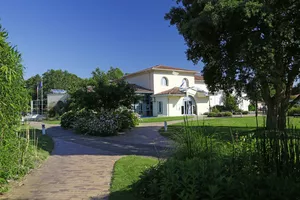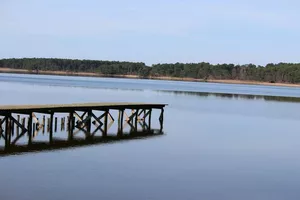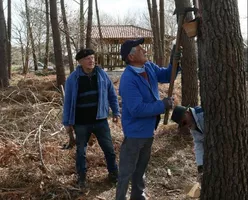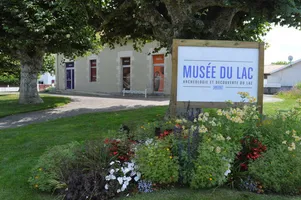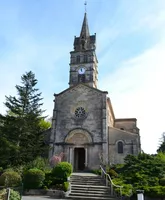Discovery trail: The village
With this discovery trail, you can explore the emblematic sites of Sanguinet in all seasons, with 9 themes to choose from.
Additional information is listed on QR codes placed at each point of interest along the route.
→ Download the fact sheet with location map
(Also available from the Town Hall or Tourist Office. Don't hesitate to ask for it if you want to take the tour).
The lake museum
The Musée du Lac presents a collection of 450 objects (ceramics, coins, tar jars, ornaments and jewelry) testifying to the daily life of the people who lived around the mouth of the Gourgue and the lake in formation for over 2000 years. Designed in close connection with geography and the environment, the museum presents the lake in its entirety, recounting its history, development, fauna and flora.
The gem area
This name recalls the first activity carried out on the site: the distillation of the resin produced by gemmaging pine trees, an operation that involved separating the vo-latile part of the resin (turpentine) from the solid part (rosin). As a reminder, each building bears the name of a tool used by the gemmakers.
Gemmage
The invention of gemmage dates back to Gallo-Roman times, when it was used to caulk ships, but the process began its industrial phase in France in the 17th century, becoming widespread on the Gascony moors from the mid-19th century onwards, with the end of the agropastoral system and the afforestation of the massif. Gemmage involves "wounding" the maritime pine in order to induce a secretion of gem or resin for harvesting.
The bastides of the Southwest
In Provence, the term "bastide" refers to a stone building at a time when the common habitat was still largely made of wood or even earth, depending on the region. In the Southwest, the term is borrowed to designate a different reality, that of a village or town built on a particular plan: the bastide. It was around 1229 that the term came to mean a new town.
Hunting by the ton
Wooden cabins on the shores of lakes may attract your attention. These are hunting installations built by waterfowl hunters. The name of the fixed post varies from region to region: it may be called a hut or a gabion, but in the south-west, the term "tonne" is used. Originally, large barrels were used as a lookout.
The Cazaux-Sanguinet pond
Straddling the Gironde and Landes départements, Lac de Cazaux-Sanguinet is one of France's largest natural freshwater lakes. The Gironde part belongs to the State, while the Landes part is owned by the communes of Biscarrosse and Sanguinet. The Cazaux air base has a safety perimeter on the lake, marked by yellow buoys, within which navigation is regulated.
Net fishing
Lac de Sanguinet, in the chain of lakes of the northern Landes region, is the culmination of the long eel migration. To be able to catch them, the inhabitants of Sanguinet invented an original process, the first traces of which date back to the 19th century.
La Gourgue
La Gourgue is a small, peaceful stream reddened by a ferruginous substrate. It is a ten-kilometer-long stream that rises in the valley of the same name.
The church
Saint Sauveur de Sanguinet church dates back to the mid-19th century. It was built between 1853 and 1856 by architects Jules Sibien and Layrolle, and by the Ferran firm, on the site of an earlier Romanesque church dating from the 12th century.
